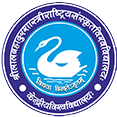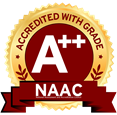
Prof. Markandey Nath Tiwari
Head of Department
Professor, Department of Sankhya Yoga
01.06.2024 to further order
Department of Yogic Science at Shri Lal Bahadur Shastri National Sanskrit University, Delhi, was established as Yoga Science Centre in 2011 with the blessing of former Vice-Chancellor Professor Vachaspati Mishra and former Shankaracharya of Jyotishmath Madhavashram ji and leadership of Professor Mahesh Prasad Silodi ji with one year Post Graduate Diplom in Yoga. In 2015, the department started a six-month certificate course in Yoga. In 2018, the Department of Yogic Science was established under the ages of the University Grant Commission (UGC) with two regular programs, B. A. (Yoga) and M. A. Yoga. In 2022, one year Post Graduate Diploma in Yoga and Naturopathy program was started. In 2023, the Department launched PhD program.
The Department of Yoga is dedicated to preserving and promoting the rich heritage of Yoga through rigorous academic study and practical training. Established with a vision to integrate ancient Yogic knowledge with contemporary scientific approaches, the department offers a holistic education in Yogic philosophy, practice, and research through its six academic programs executed by a team of highly qualified faculty. The comprehensive curriculum of these programs explores various dimensions of Yoga, including Asanas (postures), Pranayama (breathing techniques), Meditation, and Yogic philosophy while integrating it with modern sciences, i.e. Human Anatomy and Physiology, Modern Psychology, etc. Students are encouraged to engage deeply with classical Yogic texts such as Patanjali's Yoga Sutras and Hatha Yoga Pradipika, while also gaining insights into the therapeutic applications of Yoga in modern health and wellness contexts.
With state-of-the-art facilities, the department is committed to nurturing future leaders in Yoga education, therapy, and research. The Department also emphasizes interdisciplinary research, encouraging studies integrating Yogic Science with fields such as Ayurveda, Naturopathy, and modern medical practices. Through its academic programs, workshops, seminars, and community outreach, the department aims to contribute to the well-being of individuals and society by promoting the transformative power of Yoga.
Vision:
The Department of Yogic Science aims to integrate the ancient wisdom of Yoga mentioned in original and authentic treatises of Sanskrit language with modern scientific perspectives to promote holistic health, well-being, and spiritual growth. The department is committed to fostering a comprehensive understanding of Yoga as a science, philosophy, and practice, contributing to the promotion of Indian culture and traditions on a global scale.
Mission:
- To impart high-quality education and training in Yogic Science, blending traditional knowledge with contemporary research and applications.
- To nurture skilled yoga practitioners, educators, and researchers who can contribute to personal and social transformation.
- To promote wellness and health through the knowledge of Yoga, following a scientifically sound and culturally rooted curriculum.
- To contribute to the body of knowledge in the field of Yogic Science through interdisciplinary research, publications, and collaboration with national and international institutions.
Our Best Practice:
Integrate authentic and original Yoga knowledge from fundamental treatise with modern science of Anatomy, Physiology and modern Psychology in teaching and learning; and in disseminating the same to the common populace and academic fields.
Outcomes of the Best Practice
The result our best practices evident in our department’s alumni being employed as Yoga therapist in popular hospitals like All India Institute of Medical Science, Medanta, etc., Yoga teachers in popular Private and Governments schools like Delhi Public School, Kendriya Vidyalaya, etc., as Assistant Professor in the department of popular Universities of Yoga like Patanjali University, Mahrishi University of Information and Technology, Shri Lal Bahadur Shastri National Sanskrit University, etc. Several of them are employed in abroad as self-employed, Indian Embassies, Indian cultural centres, etc. They are bringing laurels to the department and university by securing first, second and third positions in N.C.C., Aasan, sports, music, Sutra, Shloka etc. competitions being held in various institutions of India.
Academic Programs
The Department offers a range of programs designed to cater to students at various levels of academic and practical expertise in Yogic Science. These include:
B.A. (Yoga): N.E.P. 2020
- Duration: 3/4 Years
- It focuses on foundational knowledge of yoga, including Asanas, Pranayama, Kriyas, Meditation, and philosophy.
- Eligibility: Candidates must have completed 10+2 (or equivalent) from a recognized board. A minimum percentage may be required, typically around 45-50% in the qualifying examination. The candidates are selected based on merit in the C.U.E.T. (U.G.) examination.
M.A. (Yoga): N.E.P. 2020
- Duration: 2 Years
- A deeper exploration of Yoga as a discipline, focusing on advanced practices, therapeutic applications, and philosophical perspectives.
- Eligibility: Candidates must have a Bachelor's degree (B.A. in Yogic Science or equivalent) from a recognized university. The candidates are selected based on merit in the C.U.E.T. examination. Students from other disciplines may also apply, provided they have a basic understanding of Yogic Science.
Ph.D. (Yoga): N.E.P. 2020.
- Focus on research in various aspects of Yogic Science, including Yoga therapy, spiritual aspects of Yoga, and integrating Yoga with modern healthcare systems.
- Eligibility: Candidates must have a Master's degree in Yogic Science (or a related discipline) with at least 55% marks from a recognized university. He/she must meet the university's requirements for research aptitude and interest in a specific area of Yogic Science.
Certificate Courses in Yoga): N.E.P. 2020.
- Six Months Certificate program in Yoga aimed at developing practical skills and theoretical understanding for those interested in applying Yoga in their personal and professional lives. It facilitates interested students to serve as Yoga instructors in schools, colleges, universities, health clubs, etc.
- Eligibility: 10+2 or equivalent is generally required for admission to diploma or certificate programs. Some basic understanding of Yoga may be preferred, though not always mandatory.
Post Graduate Diploma in Yoga): N.E.P. 2020.
- Post Graduate Diploma program in Yoga aimed at developing practical skills and theoretical understanding for those interested in applying Yoga in their personal and professional lives. It facilitates interested students to serve as Yoga teachers in schools, colleges, universities, health clubs, etc.
- Eligibility: Graduation in any discipline is generally required for admission to a diploma program. Some basic understanding of Yoga and Naturopathy may be preferred, though not always mandatory.
Post Graduate Diploma in Yoga and Naturopathy): N.E.P. 2020.
- Post Graduate Diploma program in Yoga aimed at developing practical skills and theoretical understanding for those interested in applying Yoga in their personal and professional lives. It facilitates interested students to serve as Yoga teachers and Naturopathy assistants in schools, colleges, universities, health clubs, etc.
- Eligibility: Graduation in any discipline is generally required for admission to a diploma program. Some basic understanding of Yoga and Naturopathy may be preferred, though not always mandatory.
Faculty:
The Department boasts a highly experienced and dedicated faculty, comprising scholars, practitioners, and researchers in Yogic Science. Faculty members bring a wealth of knowledge from various aspects of Yoga, ranging from traditional practices to modern therapeutic applications. Their collective expertise ensures a comprehensive and multi-dimensional approach to Yogic education.
Currently, the department is headed by Professor Markandey Nath Tiwari. It has three permanent faculty Dr Ramesh Kumar, and Dr Vijay Singh Gusain; four contract-based faculty Shri Vivek Mishra, Dr Jai Singh Bharia, Shri Balvir Singh and Smt. Priyanka Pandey and two Yoga trainers, Smt. Mithlesh Baisla and Shri Harsh Shukla.
Events and Workshops:
The Department organizes departmental, state, national and international conferences, workshops, and seminars to disseminate knowledge and foster discussions on contemporary issues in Yogic Science. Regular Yoga camps and outreach programs are also conducted for the public to promote health and wellness.
Career Opportunities:
Graduates from the Department of Yogic Science are well-equipped to pursue careers in various fields such as:
- Yoga Instructors and Educators in schools, colleges, and wellness centres.
- Yoga Therapists in hospitals, rehabilitation centres, and wellness clinics.
- Researchers and Teachers in academic institutions, focusing on the science and philosophy of Yoga.
- Spiritual Guides promoting holistic living and personal development through Yogic principles.
Contact Information:
Department of Yoga, Shri Lal Bahadur Shastri National Sanskrit University (Central University) B-04, Qutub Institutional Area, Shaheed Jeet Singh Marg, New Delhi – 110016, Phone: +91-11-46060606, Email: dyoga[at]slbsrsv[dot]ac[dot]in














